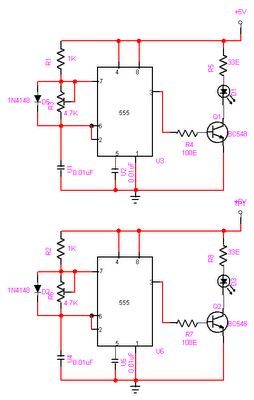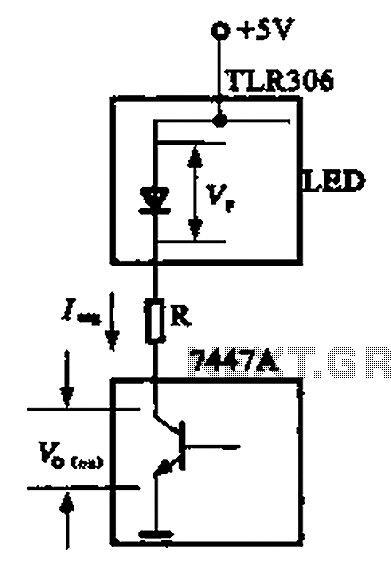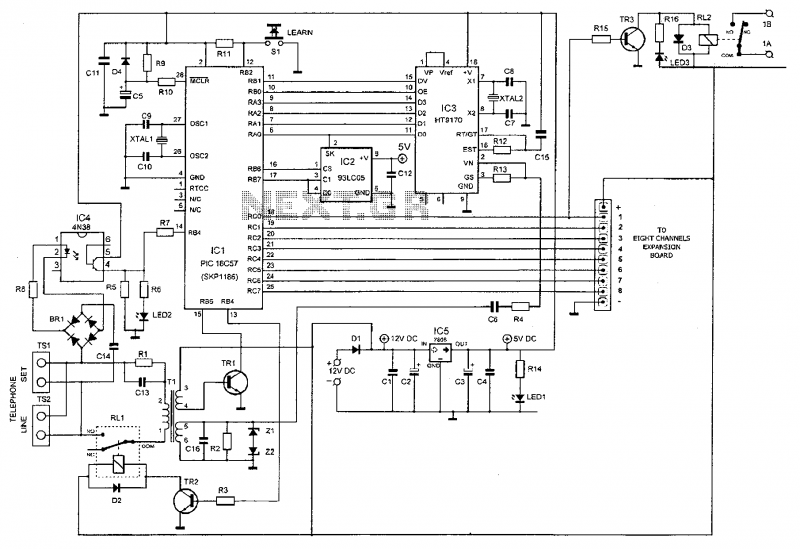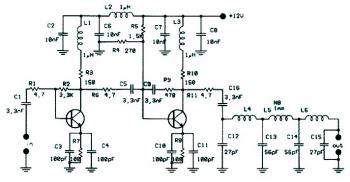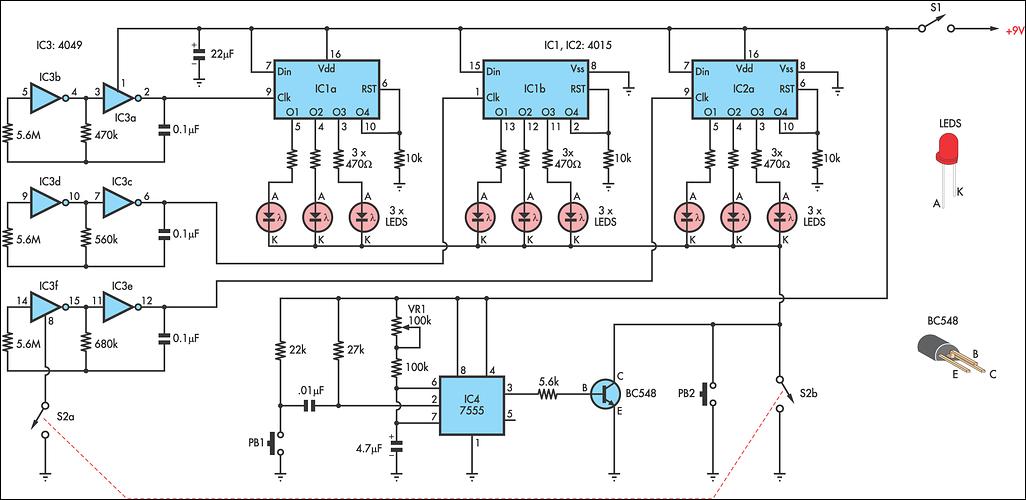
7 Segment Display Counter based 74LS90
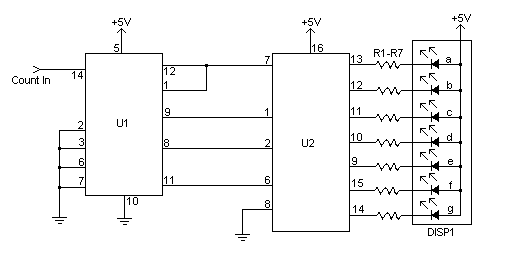
This is a 7-segment counter circuit based on the IC 74LS90 TTL. It can be utilized in conjunction with various circuits where a counter enhances visual appeal. The circuit accepts any TTL-compatible logic signal and can be easily expanded. Additional digits can be incorporated by constructing a second (or third, or fourth, etc.) circuit and connecting the junction between pins 11 and 6 of the 74LS90 and pin 14 of the 74LS90 in the other circuit. This method allows for further expansion to accommodate as many digits as desired.
The 7-segment counter circuit employing the 74LS90 TTL IC functions as a decade counter, capable of counting from 0 to 9. The 74LS90 is a synchronous counter that features four output pins (Q0 to Q3), which represent the binary count. These output pins can be connected to a 7-segment display decoder, such as the 74LS47, which converts the binary output into a format suitable for driving a 7-segment display.
The circuit operates by receiving a TTL-compatible clock signal, which increments the counter with each pulse. The counter's output can be directly connected to a 7-segment display through the 74LS47 decoder. The 74LS47 takes the binary-coded decimal (BCD) input from the 74LS90 and activates the appropriate segments of the display to represent the decimal digits from 0 to 9.
For expansion, additional 74LS90 and 74LS47 pairs can be connected in cascade. The Q3 output of the first 74LS90 can be linked to the clock input of the next 74LS90, allowing for seamless counting beyond a single digit. The connection between pins 11 and 6 of the 74LS90 and pin 14 of the subsequent 74LS90 serves as an interconnection point for cascading multiple counters. This configuration permits the construction of counters with multiple digits, enabling displays of larger numerical values.
Power supply considerations for the circuit include ensuring that the ICs are powered with a stable voltage, typically +5V for TTL logic. Additionally, decoupling capacitors should be placed near the power supply pins of the ICs to filter out noise and stabilize the voltage supply.
Overall, the 7-segment counter circuit based on the 74LS90 TTL IC provides a versatile and expandable solution for displaying numerical counts in various electronic applications. Its straightforward design and compatibility with TTL logic make it an attractive choice for both educational and practical implementations in electronic projects.Here is a 7 segment counter circuit based on IC 74LS90 TTL. This can be used in conjunction with several circuits where a counter to show the progress adds a little more attractive. This circuit accepts any TTL compatible logic signal, and can be extended easily. You can add more digits by building a second (or third, or fourth, etc. ) circuit and c onnecting the pin 11-6 junction of the 74LS90 and 74LS47 to pin 14 of the 74LS90 in the other circuit. You can keep expanding this way to as many digits as you want. 🔗 External reference
The 7-segment counter circuit employing the 74LS90 TTL IC functions as a decade counter, capable of counting from 0 to 9. The 74LS90 is a synchronous counter that features four output pins (Q0 to Q3), which represent the binary count. These output pins can be connected to a 7-segment display decoder, such as the 74LS47, which converts the binary output into a format suitable for driving a 7-segment display.
The circuit operates by receiving a TTL-compatible clock signal, which increments the counter with each pulse. The counter's output can be directly connected to a 7-segment display through the 74LS47 decoder. The 74LS47 takes the binary-coded decimal (BCD) input from the 74LS90 and activates the appropriate segments of the display to represent the decimal digits from 0 to 9.
For expansion, additional 74LS90 and 74LS47 pairs can be connected in cascade. The Q3 output of the first 74LS90 can be linked to the clock input of the next 74LS90, allowing for seamless counting beyond a single digit. The connection between pins 11 and 6 of the 74LS90 and pin 14 of the subsequent 74LS90 serves as an interconnection point for cascading multiple counters. This configuration permits the construction of counters with multiple digits, enabling displays of larger numerical values.
Power supply considerations for the circuit include ensuring that the ICs are powered with a stable voltage, typically +5V for TTL logic. Additionally, decoupling capacitors should be placed near the power supply pins of the ICs to filter out noise and stabilize the voltage supply.
Overall, the 7-segment counter circuit based on the 74LS90 TTL IC provides a versatile and expandable solution for displaying numerical counts in various electronic applications. Its straightforward design and compatibility with TTL logic make it an attractive choice for both educational and practical implementations in electronic projects.Here is a 7 segment counter circuit based on IC 74LS90 TTL. This can be used in conjunction with several circuits where a counter to show the progress adds a little more attractive. This circuit accepts any TTL compatible logic signal, and can be extended easily. You can add more digits by building a second (or third, or fourth, etc. ) circuit and c onnecting the pin 11-6 junction of the 74LS90 and 74LS47 to pin 14 of the 74LS90 in the other circuit. You can keep expanding this way to as many digits as you want. 🔗 External reference
